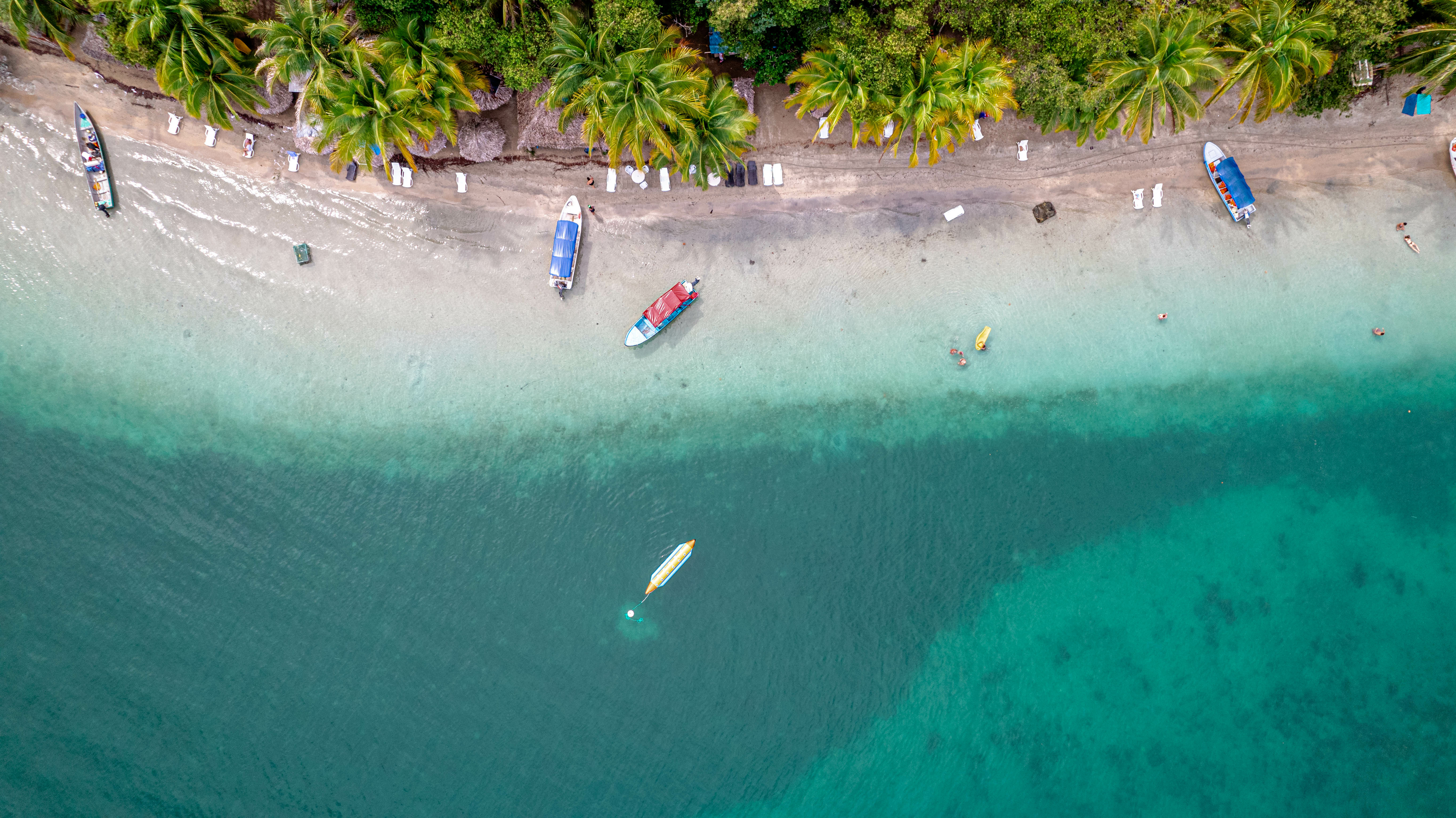
While I’ve been going to Costa Rica for 25 years, my exploration of next-door neighbor Panama started much later. Before I traveled to the country, though, I heard about two places constantly:
- Boquete, and
- Bocas del Toro
That’s likely because they were the two earliest areas to be embraced by a significant number of American expats. The two spots offer significant contrasts despite being only a four-hour car drive apart — the former offering the cool climate of the highlands, while the latter provides the prototypical Caribbean experience.
If you’re looking to live primarily in a spectacular beach setting, you should plan to visit. That’s exactly what Bocas del Toro offers.
Island Living with Digital Potential
“The crystalline waters rival those of the Bahamas,” writes Jess Ramesch for International Living, describing Panama’s most beautiful province:
From the perfect sands of Zapatilla Island to the starfish-strewn Boca del Drago, this area boasts a jaw-dropping amount of unknown beaches where, on a regular weekday, you’re likely to be the only visitor.
But Bocas isn’t just about stunning scenery. It offers an affordable Caribbean lifestyle with the infrastructure needed to run a digital business.
This collection of islands delivers surprisingly solid internet connectivity. Unlike many tropical “digital nomad” destinations that promise more than they deliver, Bocas actually works for professionals who need reliability.
The archipelago consists of more than 100 islands, with Isla Colón serving as the hub. Be forewarned that the provincial capital of Bocas Town might not impress at first glance. The airport and docks have a shabby appearance that belies the vibrant community within.
Don’t be fooled by first impressions. What makes Bocas truly exceptional is its unique cultural diversity, with the Bocatoreños (locals of Bocas Town) representing ancestry from Jamaica, Barbados, and Trinidad/Tobago.
Low Overhead, High Quality of Life
Here’s where it gets interesting for location-independent Generation Xers looking to stretch their dollars without sacrificing quality of life. According to Amy Copadis, who relocated to Bocas del Toro from the northeastern US, rental costs are remarkably affordable:
“I pay $375 a month, which includes WiFi and water,” notes Copadis about her cozy one-bedroom apartment in Bocas Town. “A similar apartment where I came from in the US might cost upwards of $1,000, and probably wouldn’t include any facilities.”
This pricing isn’t an anomaly. Throughout Bocas, comfortable cabins are increasingly available for $500 to $800 a month on long-term leases. For those wanting extra space, amenities, or waterfront property, expect to pay between $850 to $1,200 monthly — still a fraction of comparable properties in the US.
The rental market has improved significantly over the past decade. Where once rentals were scarce or overpriced, today’s options offer good value and variety. This matters tremendously when you’re launching a location-independent business. Lower overhead means your runway extends further, allowing your venture time to grow without draining your savings.
Practice Caution with Real Estate Purchases
While Bocas continues to attract both tourists and expats, Ramesch advises caution for those considering property purchases. Unlike other areas in Panama, Bocas has a significant amount of untitled property — some under right of possession (ROP) land and some owned by indigenous tribes as part of their reserve.
“Because Bocas has had a history of property disputes, we don’t recommend buying until you’ve lived there a while and understand both the lay of the land and the risks,” Ramesch explains.
This advice aligns perfectly with the Untourist mindset: Live there first and test before you invest. Renting gives you the flexibility to pivot if necessary, while allowing you to experience daily life in Bocas before making larger commitments.
From my own experience working from multiple countries, I’ve found that the best strategy is booking temporary accommodations upon arrival, then exploring on foot. Often, the most attractive rentals aren’t listed online but advertised through small local signs.
Building More Than Just a Business
One thing newly location-independent people don’t initially prioritize is the importance of engagement with the local community. In Bocas, expats tend to be deeply involved in island life. Some launch businesses that fuel the local economy, while others teach students or volunteer for important causes.
This involvement creates meaning beyond the typical nomadic experience. Instead of being transient, you’re building something valuable for yourself and others.
The community has worked collaboratively to address challenges like trash disposal and protect the local environment, from coral reefs to sea turtles. Recent infrastructure improvements include paved streets, spruced-up sidewalks, and a ban on most single-use plastic bags.
Bocas offers the perfect blend of purpose and paradise. The affordable cost structure allows you to launch ventures with lower risk, while the natural beauty and relaxed pace provide the lifestyle that conventional retirement only promises.
The Practical Reality of Daily Life
Imagine starting your workday with a conference call from your terrace overlooking the Caribbean, taking a midday break for a swim, then returning to complete projects in a setting that inspires rather than depletes.
Beyond the picture-perfect settings, Bocas provides the practical elements expats need and desire. The area offers modern amenities including a variety of American foods in local stores and restaurants that cater to international tastes.
Copadis describes her typical day:
One of my favorite ways to enjoy a night on the town is sitting in a restaurant on the waterfront and watching the soft Caribbean waves roll in and out. I also love taking a quick boat ride out to one of several nearby islands for a relaxing day on a sandy beach.
This blend of work functionality and lifestyle quality is precisely what makes Bocas attractive to location-independent professionals. You maintain connectivity while gaining experiences that would be impossible in traditional work environments.
The challenge for most isn’t technical, it’s psychological. Making the leap requires abandoning outdated notions of what constitutes “real work” and embracing a new paradigm where productivity and quality of life aren’t mutually exclusive.
